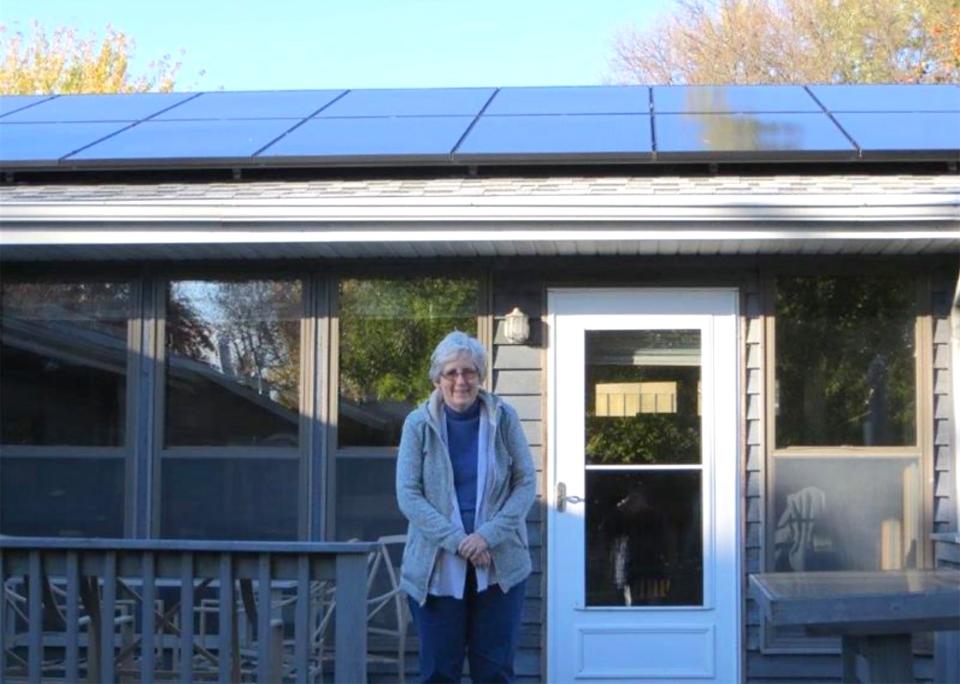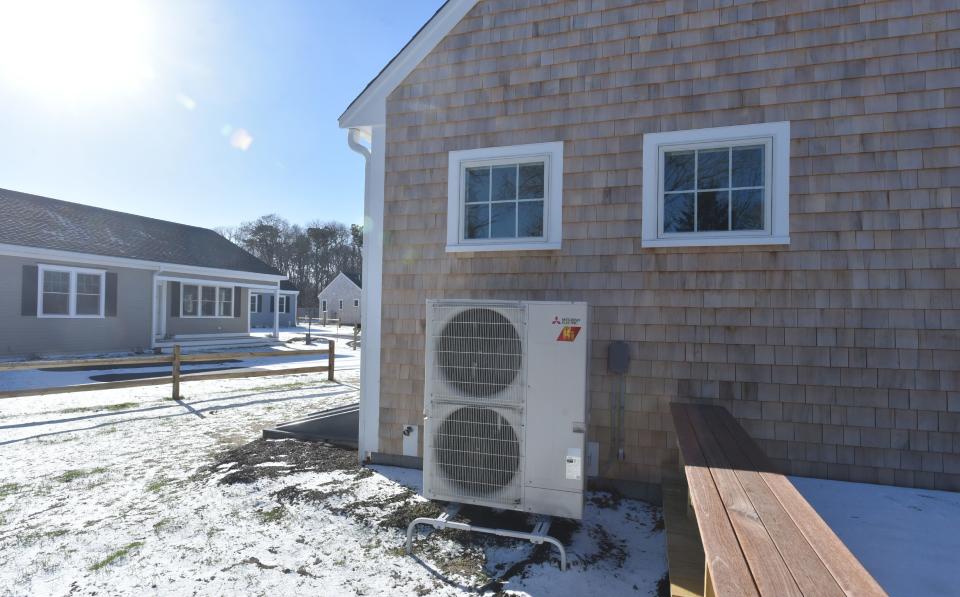$150 million in federal infrastructure rebates can help Wisconsin residents ‘green’ their homes
Replacing a furnace is one of the most common, costly expenses associated with owning a home, ranging from $4,000 to $20,000, depending on the model.
But starting this year, many homeowners will be able to offset some or all of those costs thanks to rebates offered in the Biden Administration’s Inflation Reduction Act to replace old appliances with more climate-change friendly versions. Households that replace their furnaces with a heat pump, for example, would be eligible for rebates.
Patricia Dwyer-Hallquist, an Oshkosh resident who took advantage of earlier tax rebates to install solar panels on the home she shares with her husband, said these kinds of incentives make “greener” upgrades to a home more accessible.

“The up-front investment is a lot for a lot of people, which is why the measures they took in the (bill) is good,” she said.
She said she is interested in the rebate and – having already purchased an electric vehicle – is always looking to reduce her carbon emissions. A former science teacher, Dwyer-Hallquist first got interested in climate change during her time as an advisor for the Wisconsin Public Service’s solar olympics team.
She is currently a member of the climate citizens lobby, a local chapter that advocates for legislation around climate change.
“I think it’s probably one of the biggest issues of today,” she said.
Green Homeowners United is an organization focused on helping homeowners find ways to increase energy efficiency and reduce their climate footprint.

“We have to slowly transition all of our buildings now, as soon as they can,” said Kevin Kane, the company’s co-founder. “The research that started us down this path was how many homes in the metro would benefit from this.”
Kane estimated more than 65,000 homes in the Milwaukee area with furnaces could receive a heat pump 90-100% free.
“It’s helpful for the planet and helpful for them,” he said.
What is offered under the HOME Rebates program?
The home energy performance-based rebate is called the HOME Rebates program. It provides up to $4,000 per household and up to $400,000 to multifamily buildings for energy efficient retrofits.
The state of Wisconsin received a total of $74,904,830 for this program.
What is offered under the home electrification program?
Under the high-efficiency electric home rebate program, if your income is 80-150% of the median in your area, you can receive 50% of the costs to electrify your home. If your income is 80% of the median or lower, all of the costs to electrify the home will be covered.
There is a cap of $14,000 per household which includes the following:
$8,000 for heat pumps
$4,000 for panel/service upgrades
$1,750 for heat pump water heaters
The state of Wisconsin received a total of $74,470,200 for this program.
What types of upgrades qualify for the HOME Rebates program?
The rebates are providing on a sliding scale depending on how much the retrofits reduce energy use. Retrofits that reduce energy use by 20% will receive $2,000 in rebates and retrofits that reduce energy by 35% or more will receive $4,000 in rebates.
Homes that are considered moderate-to-low income can receive double the maximum rebates.
What type of upgrades qualify for the electrification program?
Heat pumps are one of the most rebated items, seconded by panel upgrades and heat pump water heaters.
Kane said heat pumps are fairly common in the south and even New York. Because the pumps work by moving heat from outside to inside, they do not work well in very cold weather; however, heat pumps are often considered more efficient because they can also cool spaces.
Electric stoves, electric clothes dryers and insulation/air sealing materials can also be eligible for rebates.
How can I take advantage of either programs?
Property owners interested in taking advantage of these rebates can call a company such as Green Homeowners United to find out how they can make their home more energy efficient by sealing the airs in their home and changing their appliances.
“If an energy assessor like us goes in and shows them how, they can get a tax credit for the assessment and thousands of dollars off the work,” Kane said. “We go into a house and look for ways to make it more energy efficient and how to fix it.”
The company also helps point out to homeowners which rebates they can use in their retrofitting.
Kane said the rebates will officially be available in 2023.
To read more about how you can save money from energy-saving windows, purchasing an electric car, installing solar panels and other devices, you can visit whitehouse.gov/cleanenergy.
Talis Shelbourne is an investigative solutions reporter covering the issues of affordable housing, environment and equity issues. Have a tip? You can reach Talis at (414) 403-6651 or tshelbourn@jrn.com. Follow her on Twitter at @talisseer and message her on Facebook at @talisseer.
This article originally appeared on Milwaukee Journal Sentinel: Wisconsin has received $150M for homeowners to ‘green’ their homes

